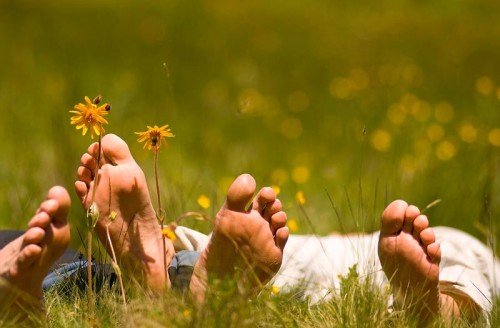The science behind the importance of sleep is vast – it’s now known that optimal sleep is critical in order for numerous physiological functions to occur properly (I encourage you to read this great article on why sleep is so important). And of course on the flip side is how deleterious sleep deprivation is to our health – even after just a few days our bodies become the physiological equivalent of a Type 2 diabetic. When you realize how prevalent suboptimal sleep has become in our go-go-go, stress-filled, late night, electronically addicted culture, it’s downright depressing (pun intended: sleep deprivation contributes to depression; along with poor diet style and lack of exercise).
One way to support your health is with the mid-day nap – some of us yearn for it, some of us never engage in it, and others aren’t sure what to think of it (another great article on napping is from Nestmaven). Humans are animals, domesticated animals with more irregular sleep patterns, but animals nonetheless. If you have ever been to a zoo or wild animal park, you know that animals and napping go hand in hand, and humans are no different. In many cultures, especially those closer to the equator, a nap or a siesta is a way of life. What you probably didn’t know is that from the moment you wake up, there are chemicals circulating in your brain that are telling you to sleep; however, there are also chemicals telling you to stay awake. The hottest time of the day coincides not only with a post-prandial dip in blood sugar (your body’s response to eating a heavy lunch by releasing insulin and making you sleepy), but also with the time that our brain’s biochemistry is even in regards to sleep and wakeful chemicals. In this specific time is what Dr. John Medina calls the perfect “Nap Zone” and it usually takes place between 1:30 and 3:30 p.m. Dr. Medina states on his website dedicated to his book “Brain Rules” that this is not only the best time to take a nap, but also the worst time to give a lecture or operate heavy machinery; the most car accidents happen at this time.
The absolute best time to take a nap is between 2-3 p.m., but for how long? Well, there are many theories on naps; the power nap is a shorter nap with its focus on benefits to time ratio and on working on correcting sleep debt. To get the best performance post short nap, keep the power nap to around 20 minutes, but gauge this for yourself; everyone is different, and 15 minutes might be perfect for one person, while 22 minutes is great for another. Different nap times will improve different areas of cognition; for example, in the book by Dr. Sara C. Mednick called “Take a Nap! Change Your Life,” she says that naps around 20 minutes will “increase alertness and motor skills,” while a 40 minute nap will “improve memory,” and naps of about 90 minutes “improve creativity.” This all has to do with what type of sleep you get (sleep stages), ranging from slow wave to REM sleep.
In a UC Berkeley study, researchers found that a group who napped 90 minutes in the afternoon scored much better on memory tests and their ability to learn than the no-nap group. An associate psychology professor heading up the study, Matthew Walker compared what the nap did for the napper’s mind to someone clearing a full email inbox, thereby allowing for more; “It’s as though the e-mail inbox in your hippocampus is full and, until you sleep and clear out those fact e-mails, you’re not going to receive any more mail. It’s just going to bounce until you sleep and move it into another folder.”
This makes perfect sense because sleep is essential for learning. Research done with rats shows that while learning a specific maze, a rat’s brain will stimulate a specific set of neurons, and that at night (while sleeping), the rat will stimulate the same specific set of neurons in his brain over and over, thousands of time during specific types of sleep called REM sleep. If the rat is awakened during one of these stages of sleep, his ability to recall the way through the maze is compromised. “The rat seems to be consolidating the day’s learning the night after that learning occurred.”
As long as you don’t nap at your desk (and get fired) or in traffic, the benefits of napping far outweigh the risks. In terms of health promotion and prevention, nappers are much less likely to experience heart disease and other lifestyle diseases. Nappers also experience a dramatic increase in productivity, performance, memory, and learning with a decrease in sick days, reaction time, and stress.
Keep in mind – as long as you are napping for less than 90 minutes, it shouldn’t affect your night’s sleep, and if it does, make sure you are getting plenty of exercise.
When thinking about health-related decisions, it is important to always think about where we came from. Our genes haven’t changed in 40,000 years, making us the same as our hunter gatherer ancestors. This is important because they had relatively no lifestyle diseases. Our hunter gatherer ancestors would have tried to get out of the sun during mid-day, and because of all of their constant physical exertion, they would have relished in the afternoon nap.
If you are still unconvinced, take a night to sleep on it. And start napping tomorrow!

